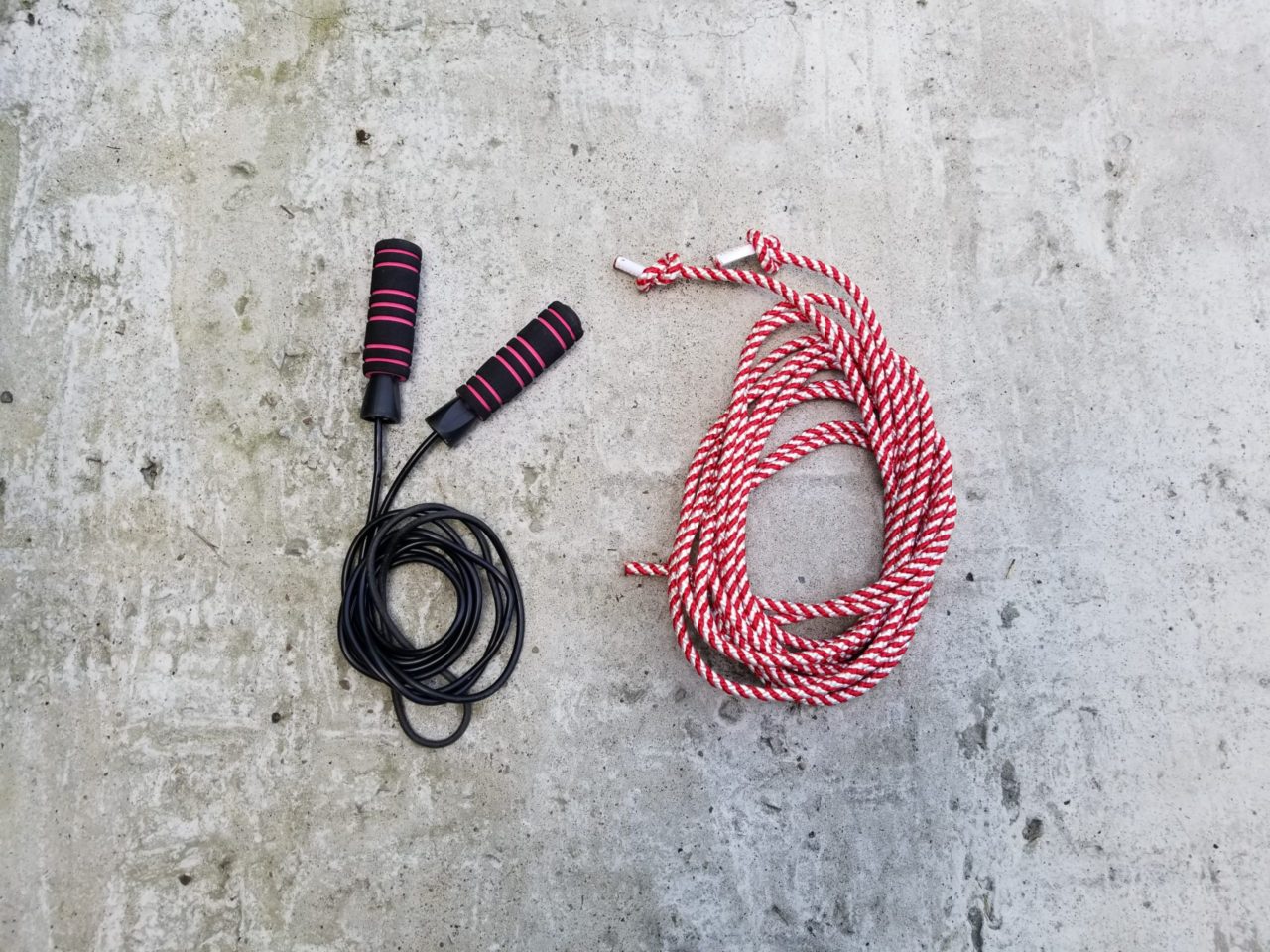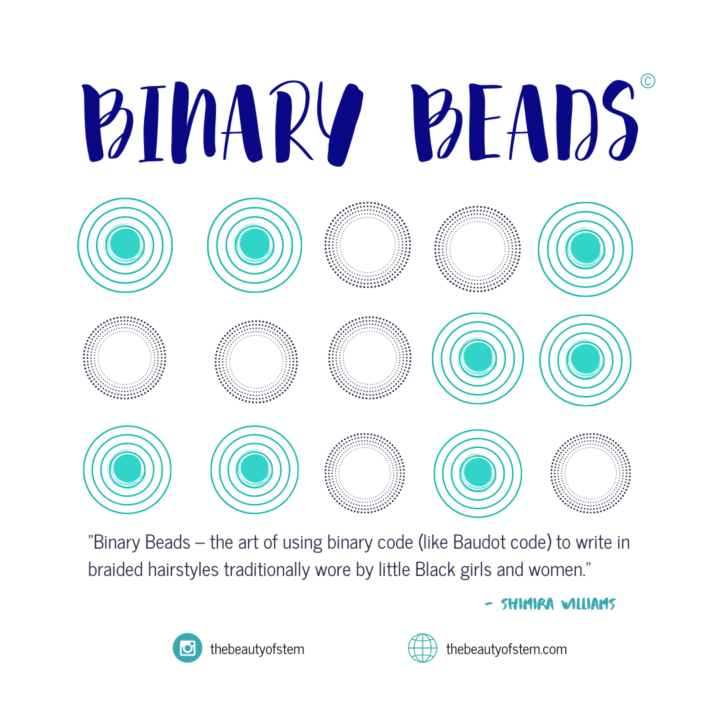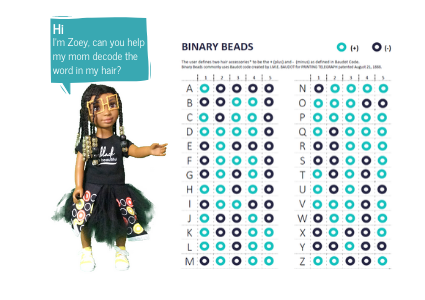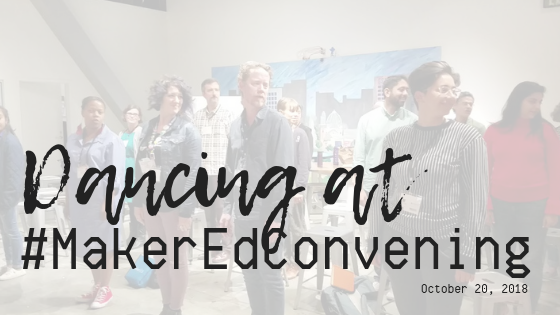In 2018, I was searching for low-cost traditional learning material that would integrate computational thinking and computer science competencies with community-based learning for early learners and their families.
Problem Statement: How can I show and tell computational thinking using a low-cost and accessible traditional learning material that an entire family can actively engage in?
One day, while playing jump rope with children at the park, it hit me. The rhymes we sing for group jump rope activities often embed learning that includes commands and conditional statements. A classic example is the “Birthday” jump rope song. The command and conditional statement is, “When I call your birthday, please jump in.” If jump rope offers the opportunity to explore computer science, then double Dutch is the spark for exploring computational thinking.
“Double Dutch is a game in which two long jump ropes turning in opposite directions are jumped by one or more players jumping simultaneously.”
(“Double Dutch (Jump Rope)”)
Digital Ethnomusicologist Kyra Gaunt’s TED Talk How the jump rope got its rhythm discusses big and small ideas behind double Dutch as she takes us on a tour of the fascinating history of the jump rope. Gaunt talks about kinetic orality – word of mouth and word of body, and how it gets passed down over generations – forcing me to recall when I first fell in love with double Dutch.
It was December 1984, my family (extended included) had traveled to Harlem, New York, to visit my great uncle Harry. The kids were sitting outside his brownstone when a group of girls appeared on the sidewalk. Soon, they started playing double Dutch. I was seven and had recently learned how to jump rope. Double Dutch was mesmerizing. How did they know when to jump between two ropes? I sat there, listening to the songs they sang and watching their feet.
“It is believed to have originated among Dutch immigrants in New York City and is now popular worldwide.[1] While it had long been a popular street activity for African American girls in New York City,[2] the modern sport of double Dutch originated in the early 1970s with NYPD officers Ulysses Williams and David Walker, who formalized the rules for competition. The first official competition was held in 1974. In the early 1980s, double Dutch was strongly associated with New York hip hop culture.[3] It has also been recognized as an element of the genre by notable MCs such as KRS-One. Competitions in double Dutch range from block parties to the world level. During the spring of 2009, double Dutch became a varsity sport in New York City public high schools.[4] “
(“Double Dutch (Jump Rope)”)
The double Dutch I knew as a girl has scaled into an elite sport and symbol of community, with precision choreography to maximize speed and performance to “wow” the audience. Double Dutch songs have also undoubtably influenced hip hop culture, expanding the potential to use double Dutch to hone critical thinking skills through literature and media review. Double Dutch is a solution to gather families together to explore the core components of computational thinking: decomposition, gathering and analyzing data, abstraction, algorithm design, and how computing impacts people and society.
To demonstrate, I remixed the PBS Kids Family Community Engagement model. The framework for “Playground Playdates™” is a six-week multi-generational engagement program designed to activate computational thinking using double Dutch. Families meet at the park or gym weekly to PLAY. Explore. PLAY. EAT.
- PLAY FOR PERFORMANCE – Families double Dutch to showcase routines or tricks they have been working on since the last meetup.
- EXPLORE – Families will work together to explore the core components of computational thinking.
- PLAY FOR PRACTICE – Families put what they are exploring into practice during the play session.
- EAT – After two rounds of double Dutch, families are ready to eat together.
—
EXPLORE: Decomposition
Have families work together to break down the components of competitive double Dutch which, according to the American Double Dutch League (ADDL), consists of three tests:
- Compulsory test where jumpers must complete a set of tricks in a certain amount of time.
- Speed test where the number of jumps are counted.
- A freestyle section where jumpers are scored on a trick routine of their own design.
PLAY FOR PRACTICE: Have families break down the set of tricks required for the compulsory test, then try them. Do not worry about time.
—
The “tick-tack” rhythm of double Dutch described by Kyra Guant is a recognizable pattern signaling the syncing of the “turners” – the two people turning the jump ropes. The “turners” ability to find a rhythm affects the data points during the competition.
EXPLORE: Gather and Analyzing Data
Have families record the time it takes each member to complete the set of tricks for the compulsory test. Families can create two data sets:
- Measure the time each trick takes.
- Measure the total time it takes to complete all the tricks in a sequence.
PLAY FOR PRACTICE:
Have families work on improving their time and start counting the number of jumps in a certain amount of time. Families can also create a chart to compare data.
—-
EXPLORE: Data Representation & Abstraction
Let the families invite friends and other families to a final meetup. Have the families think about what information is needed for a registration form. The facilitator will create an online event ticketing platform, which will result in rich data visualization for storytelling use.
Have the families make a rhyme that tells a story about their community that includes commands (inputs) and conditional statements (decisions).
—
EXPLORE: Algorithm Design
Have families design their own freestyle routine and create step-by-step instructions.
PLAY FOR PRACTICE: Have families exchange instructions and see if they can recreate each other’s routines.
The final session would be the group’s double Dutch event for friends and families. It’s a day of fun and collaboration. Families will be encouraged to perform their routines. This community engagement program is a fun, low-cost, active way to play and talk about computational thinking.



